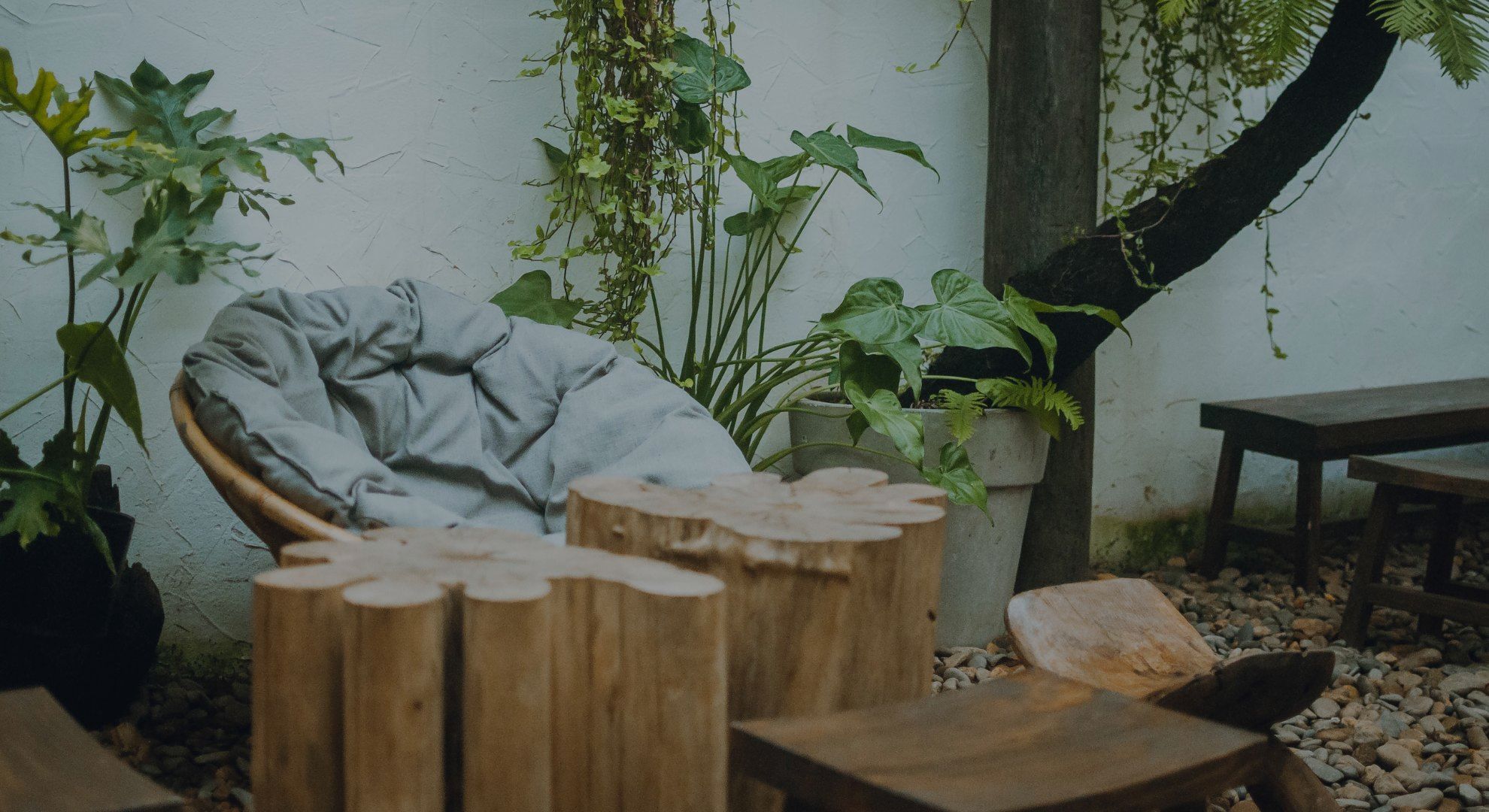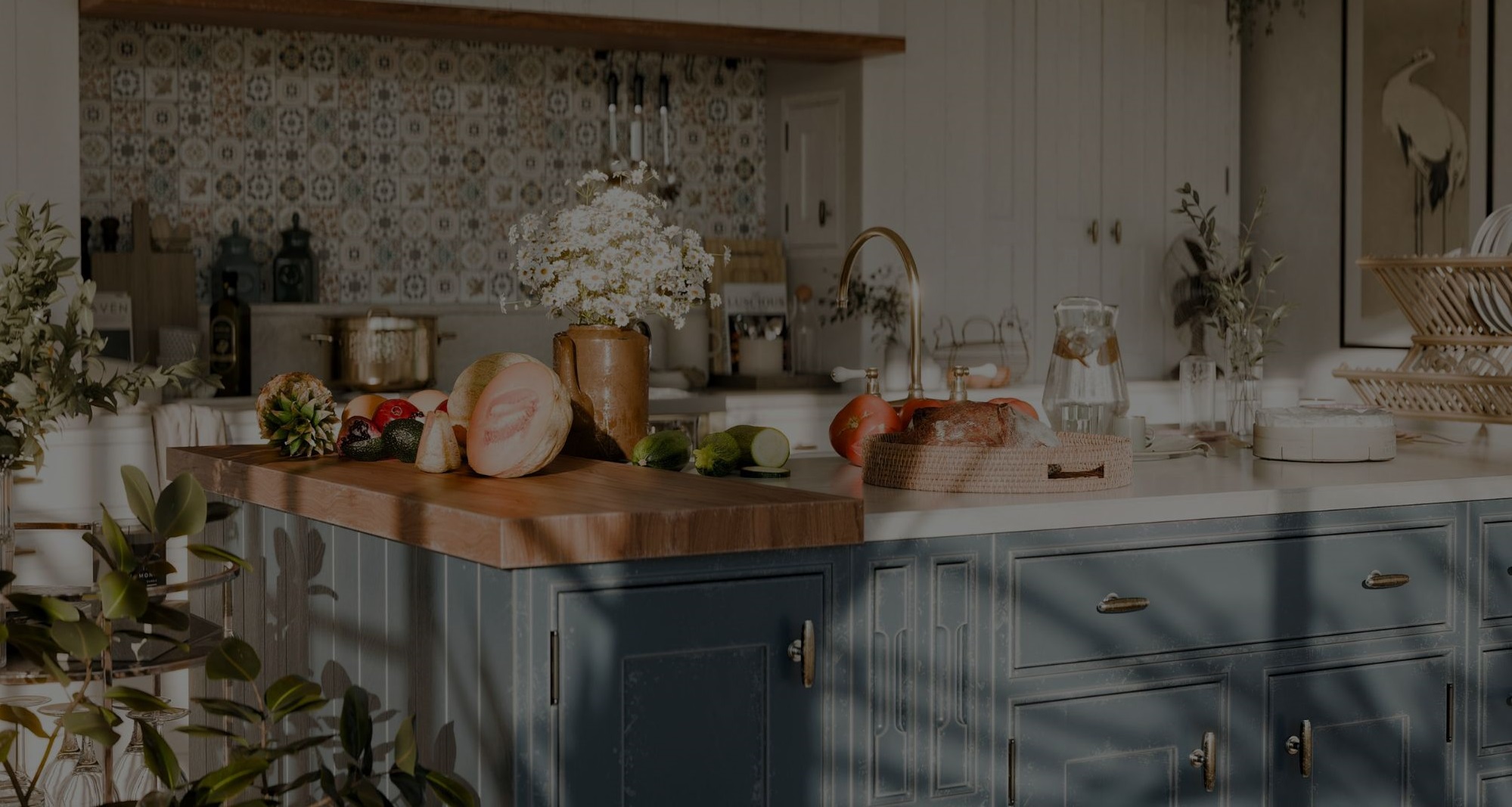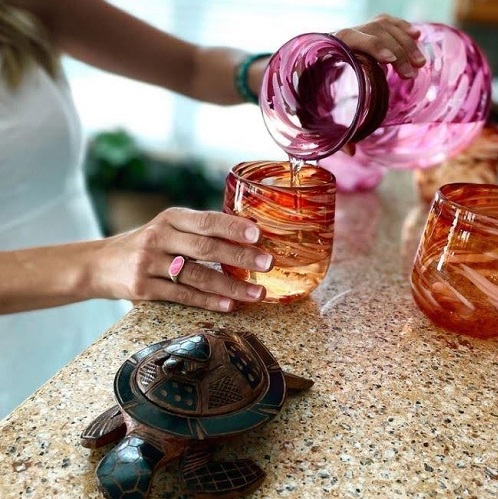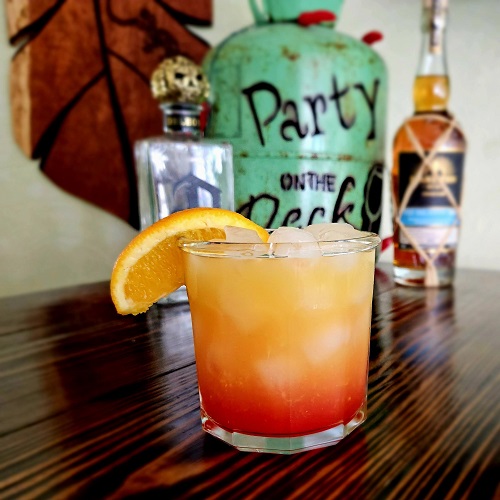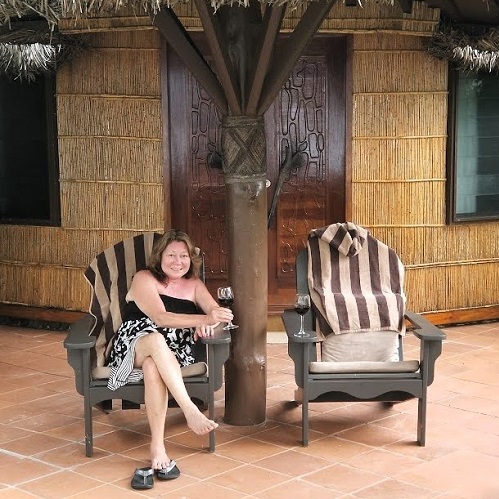
Bring Paradise Home: 20 Tropical Living Room Ideas for Every Budget

Fiji Adults Only Resorts Guide
8 Easy to Grow Indoor Tropical Plants: Planting Guide & Styling Tips
With the majority of people spending most of their time indoors and working away without taking any real time off, it’s no wonder they often daydream of being on a remote
If you are yearning to visit an exotic
Not only do these plants bring
Note: This post contains affiliate links. A click and/or purchase through one of these links may result in a commission paid to us at absolutely no cost to you. Please be sure to read our Affiliate & Advertising Disclosure.
Transform Your Home into a Serene Tropical Retreat
In this article, you will find tips about how to grow and care for
Major Benefits of Growing Indoor Plants
Indoor plants not only add beauty and a
- Therapeutic benefits as they boost mood and self-esteem while reducing stress, anxiety, and fatigue
- Improved wellbeing as increased productivity and satisfaction are some of the benefits of restorative relaxation
- Improved air quality as they absorb carbon dioxide while releasing oxygen with some species even absorbing toxic substances
- Lowered blood pressure and heart rate due to the benefits of relaxation
- Added privacy and seclusions to your personal space
- A beautified space as they are a part of creating a tropical escape at home
8 Must-Have Indoor Tropical Plants
So let’s take a look at this collection of low-maintenance
A QUICK NOTE ABOUT PETS AND TOXIC PLANTS:
While some indoor plants are toxic to dogs and cats, others are not. However, for true safety and out of an abundance of caution, we recommend that you treat ALL plants, both indoor and outdoor, as if they are toxic to pets. Even when a plant really is harmless, you still don’t want your fur babies to snack on them because not only is that a destructive behavior, your plant will look terrible! Not good! So do everything you can to keep your pets away from all of your plants.
1. Monstera Deliciosa

Photo Credit: Homes & Gardens
Also referred to as the “swiss cheese plant”, or a split-leaf philodendron, monstera deliciosa is one of the most popular indoor
Care requirements: Low-maintenance climbing
Watering: Water regularly. Once the top 2 to 4 inches of soil is dry, it’s time to water. Occasionally mist the plant or use a humidifier to create better growing conditions in dry climates.
Soil & fertilization: Prefers slightly damp acidic and neutral soil. Fertilize every 2 to 4 weeks during growing season.
Light: Keep in part shade with brighter indirect light.
Where to place: Monstera thrives in humid conditions. It will do well in bathrooms, kitchens, and living rooms where it has room to grow.
Styling: With its oversized and bold variegated leaves, monstera looks stunning when used in both
Faux version: If you don’t want to fuss with real plants or cannot have them due to allergies, here is a wonderful solid color faux version. If you prefer a variegated one, this version is smaller but it is still very nice.
2. Rubber Plant (Ficus Elastica)

Photo Credit: Domino
Commonly referred to as a rubber plant, Ficus Elastica is a magnificent
Care requirements: Low-maintenance, ideal plant for beginners.
Watering: Water when the top 2 inches of soil are dry. Occasionally mist the plant or use a humidifier to create ideal growing conditions.
Soil & fertilization: Use a fast draining soil and fertilize every two weeks, from spring to autumn.
Light: 6 – 8 hours of indirect light. Avoid exposure to direct sunlight.
Where to place: Find a spot that has plenty of indirect light. With its dramatic, large leaves, rubber plants can be a fantastic focal point for any space, including entryways and hallways.
Styling: Rubber plants add a textural element to any room. They are awesome when paired with wood furnishings, light and airy fabrics, and bold colors. When using a minimalist décor style, they can be a statement piece in a room. Be careful when pruning as rubber plants bleed a white runny sap which can be very messy. The sap will drip from cut branches and when leaves are removed. Have a paper towel or two on hand when pruning.
NOTE: Keep away from pets as rubber plants are toxic when ingested.
Faux version: If you don’t want to fuss with real plants or cannot have them due to allergies, here is a wonderful solid color faux version. If you prefer a variegated one, this version is very nice.
3. Snake Plant (Sansevieria)

Photo Credit: Pinterest
Sansevieria is the dramatic plant on the left in this picture. (The plant on the right is a fiddle leaf fig and is discussed in our next plant choice.) Sansevieria has striking sword-like leaves which provide strong lines in décor. Commonly known as the “snake plant” or “mother-in-law’s tongue” (not very nice!), it’s the perfect
Care requirements: Snake plant is very forgiving which is great for beginner gardeners.
Watering: Water when its dry but do not overwater.
Soil & fertilization: It thrives well in all-purpose cactus soil or in soil with perlite.
Light: Indirect light or low light areas.
Where to place: This plant will add interest to any room. It is perfect for bedrooms, living rooms, breakfast nooks, and home offices. It does best where there is adequate airflow and minimal fluctuations in temperature.
Styling: This plant is easy to use in both minimalist and richly decorated settings. Its distinctive, slender leaves can easily be used in any decorating style, from traditional to modern. Some examples include arranging it in pots on floating shelves or creating a striking wall display by framing plants on a shelf with empty picture frames. Combining these plants with decor on a coffee or on console table creates a very effective display. As they get bigger and require bigger pots, they are awesome on their own as floor accents. They brings a really a very cool natural quality to the room.
NOTE: Keep away from children and pets as this plant is moderately toxic if consumed.
Faux version: If you don’t want to fuss with real plants or cannot have them due to allergies, here is a wonderful solid color faux version. If you prefer a variegated one, this version is very nice.
4. Fiddle Leaf Fig (Ficus Lyrata)

Photo Credit: Fast Growing Trees
Fiddle-Leaf Fig (Ficus lyrata) is a gorgeous plant, plain and simple. It’s not the easiest houseplant to grow but isn’t the hardest either. If it is placed in a spot where it is doing well, leave it there. Its large, leathery leaves and tree-like structure are definitely worth the effort. They love bright indirect light and if cared for properly, they will become a statement piece in any room. It can grow to well over 10 feet tall indoors if given the space. These are great for homes with high ceilings.
Care requirements:
Periodically dust the leaves with a damp cloth. This helps the leaves to receive as much light as possible. Shape the plant as it grows by trimming it because it can get wide and quite big.
Watering: Keep the soil moderately moist but don’t overwater. It will drop leaves if it receives too much water. During winter months, you can water a little less often.
Soil & fertilization: Use a good quality soil that drains well. A peat-based soil or a 50/50 mix of potting and cactus soil works well. Repot as the plant grows. It can be grown large and bushy or it can be trained to grow as a small tree if you provide the main stem with a supporting rod or pole. Use a high-nitrogen plant food once a month according to the manufacturer’s directions.
Light: Morning light is the best as it is less intense than afternoon light. Direct sunlight will burn the leaves. Periodically rotate it so it grows as straight and as tall as possible.
Where to place: Place your fiddle leaf fig near a bright window, preferably one with an airy curtain that will filter the light. Ensure adequate airflow and minimal fluctuations in temperature.
Styling: This plant is very easy to use in both minimalist and richly decorated settings. It is big and tall and adds incredible dimension to a room. When grown as a tree, it will need to be in large and heavy pot to support its size and weight. Remove leaves with browning edges and spots. If these do appear, ease up on the watering to see if it improves. Like the rubber plant, pruning can be messy as a white runny sap will drip from cut branches and from where leaves are removed. Have a paper towel or two on hand when pruning.
NOTE: Keep away from children and pets. This plant is toxic if ingested.
Faux version: If you don’t want to fuss with real plants or cannot have them due to allergies, here is a wonderful solid color faux version. If you prefer a variegated one, this version is very nice.
5. Kentia Palm

Photo Credit: Melanie Jade Design
Also known as a sentry palm or thatch palm, this beautiful, elegant tree originates from a small island near Australia. It grows exceptionally well indoors because it tolerates low light conditions and container growth.
Care requirements: To help it reach its maximum size, increase humidity indoors by either misting or using a humidifier.
Watering: Let soil dry between watering.
Soil & fertilization: Use well-draining soil and fertilize lightly in spring and summer.
Light: Bright, indirect light.
Where to place: Place in a bright spot indoors, away from all drafts, doors, heaters or air conditioners. In general, it is best to put your Kentia palm near a window with a sheer curtain, where traffic is low and there is enough space for it to grow in an uninterrupted manner.
Styling: Since Kentia palms are very versatile, you can easily incorporate them into any preferred decorating style. With its slender leaves, it adds sophistication and
Faux version: If you don’t want to fuss with real plants or cannot have them due to allergies, here is a wonderful faux version.
6. Giant Bird of Paradise (Strelitzia)

Photo Credit: Plant Studio
This stunning
Care requirements: Easy to grow. Periodically dust the leaves and remove any dying leaves.
Watering: Regular watering and let dry between each watering.
Soil & fertilization: Use well-draining soil potting soil, preferably with added perlite or peat. Fertilize with a regular houseplant brand every 2 months.
Light: These can take either full sun or bright indirect light.
Where to place: Place your giant bird of paradise in places which are free from drafts as they can damage leaves. Ideally, place it near a south or west-facing window. It looks amazing in living rooms and kitchens as long as it has plenty of space to grow. Depending on the size of the space, they can grow to be very large.
Styling: Placing it in a textured pot or into a basket will add to the classic
NOTE: Keep away from children and pets. This plant is toxic.
Faux version: If you don’t want to fuss with real plants or cannot have them due to allergies, here is a wonderful faux version.
7. Anthurium

Photo Credit: Easyplant
Anthuriums are known for their beautiful, striking glossy red petals, which are actually leaves. This perennial plant, also known as a “flamingo plant”, has a slow to moderate growth rate and its “flowers” typically last from 6 to 8 weeks.
Care requirements: Anthuriums are simple and easy to care for. As a species native to the tropics, they prefer high humidity. Raise humidity by misting, using humidifiers, or making DIY pebble trays.
Watering: Keep slightly moist at all times. Bear in mind that roots are vulnerable to rot so avoid letting it sit in water.
Soil & fertilization: Use coarse and well-draining soil, similar to orchid bark. A regular household brand fertilizer once or twice monthly works fine.
Light: Ideally, 6 hours of indirect light. These are susceptible to sunburn so keep them out of direct sunlight.
Where to place: Place in warm, bright areas, away from drafts, and where they can show themselves as accent pieces.
Styling: Use it as a tabletop plant, mixed in with a few other
Note: Keep away from children and pets. This plant is toxic.
Faux version: If you don’t want to fuss with real plants or cannot have them due to allergies, here is a wonderful faux version.
8. Bromeliad

Photo Credit: Pinterest – Blog das Flores
Native to various
Care requirements: Bromeliads are simple to maintain and can make long lasting house plants. They can survive for years when properly cared for. Most types of bromeliads (including pineapples!) produce offshoots after flowering. Once the flower dies, that part of the plant will not bloom again. These make them easy to propagate.
Watering: Once every week or two.
Soil & fertilization: Some bromeliads require orchid bark with humus and perlite. Others such as pineapples can grow in a good quality potting soil. Fertilize monthly.
Light: 12 to 16 hours of bright, diffused light for optimal growth.
Where to place: Choose a spot near a window but away from direct sunlight. Bromeliads thrive in humid conditions so they typically do very well in bathroom as the conditions there can mimic the
Styling: This gorgeous jungle plant can be styled in so many different ways. They can be placed in bright tropically colored pots and bowls. Or place a few in eye-catching baskets or other interesting containers. They make great focal points on tables and in windowsills. They pair very well with decorative accents too. You can read more about great tropical accents and then create your own look by adding these and other wonderful
Faux version: If you don’t want to fuss with real plants or cannot have them due to allergies, here is a wonderful faux version.
Tropical Home Plant Needs
Major factors to consider when selecting indoor
- Lighting – Light is one of the most important factors that ensure successful plant growth. However, not all plants require the same amount of light to grow. Some
tropical foliage thrives in low or medium light while others flourish in brighter light. - Temperature & Humidity – Different plants have different temperature and humidity requirements which is why it is important to research the specifics your plant will need. For instance, most
tropical plants prefer temperatures over 70 °F during the day and humidity levels from 70% to 80%. To increase humidity, use a humidifier, mist them regularly, or incorporate pebble trays. - Watering – If watering recommendations are not provided when you purchase a plant, do some quick research online. Just as correct lighting levels are crucial, so is soil moisture content. Always check the soil moisture to avoid overwatering.
- Space – Make sure your plant has enough space to thrive, especially when fully grown.
- Soil & Fertilizers – Choose a well-draining, enriched, moisture-holding soil mix. Fertilize only after the plant has fully acclimated to your home, this can take about 30 days after you have brought it home.
Acclimating Tropical Plants To Your Home Environment
Before arriving at your home, your newly bought indoor plant is typically transported on a truck from a garden center in a sunny location (Florida or California) to your local nursery shop. All of these changes in environment cause stress for the plant which will need some time to acclimate to its new home.
The adjustment typically lasts for a few weeks. During this time, it is common for the plant to lose some of its older leaves.
There are several things you can do to ease the transition and to help your
- Place in bright light sunlight for a few weeks before transitioning them fully indoors
- Fully saturate the pot
- Add appropriate fertilizers to improve root system and plant’s strength
- Keep the plant in its original nursery pot for couple of weeks before considering repotting
Tips For Repotting Tropical House Plants
Repotting ensures your plant has plenty of room to grow and thrive. Common signs that indicate your plant may need repotting include roots growing out of pot’s drainage holes, tipping over easily because it has become top-heavy, soil that dries out very fast after watering, and a thin or less dense appearance due to excessive leaf drop.
Here are a few tips on how to properly repot your
- Select the perfect container – Choose a pot with drainage holes one to two sizes larger than the current one. Bear in mind that plants in certain ceramic and terracotta pots may need more water because these pots are more porous.
- Prep the plant – Turn the current pot sideways or upside down and gently tap the sides to loosen the soil. Carefully untangle the roots and trim damaged ones to promote new root growth.
- Transplant the plant – Layer the bottom of new pot with fresh soil to act as a base for the root development. Place the plant in the new pot and begin filling with fresh soil, carefully incorporating soil into the roots. Lightly tamp down the soil to remove air pockets as these can promote root rot. Water thoroughly to help settle the soil further.
- Aftercare – Keep the plant in a moderately shaded area for a few days until the plant acclimates and then gradually return it to its original place.
Grooming & Pruning Tropical Plants
Indoor
- Remove yellow leaves – Yellow leaves should be removed to promote the growth of new ones. Natural leaf shedding should not to be confused with discoloration due to overwatering or because of diseases or pests.
- Trim damaged leaves – Trimming damaged leaves to remove tears and brown edges improves the health and appearance of the plant.
- Clean the leaves – Dust with a feather duster or clean with a soft, moist cloth or paper towel. This allows leaves to collect as much light and humidity as possible.
- Prune taller stems – Pruning is an important part of plant care. It is also a process than can be used to train plants. When you remove weak growth by trimming taller stems, many plants will form new growth just below the cut. This will force the plant to “bush out” with new growth, making it more round and full. Trimming from the side of the plant or from lower branches will force new growth at the top of plant, increasing its height. Make sure to always use sharp, sterilized shears to prevent spreading diseases from other plants. The best time for pruning is in late winter or early spring, before the growing season starts.
Share The Inspiration!
Do you know another
For your convenience, here is a list of the products we have recommended in this blog post which can really help to create an amazing and relaxing
-
 $64.99Buy Now
$64.99Buy NowThis faux monstera is the perfect addition when tropical greenery for your retreat is needed but you don't want fuss with live plants!
We earn a commission if you make a purchase, at no additional cost to you.
05/14/2025 05:17 pm GMT -
 $19.99Buy Now
$19.99Buy NowIt you are looking for a beautiful variegated monstera plant but with don't want to fuss with a real plant or cannot have them due to allergies, this faux version is an excellent substitute!
We earn a commission if you make a purchase, at no additional cost to you.
05/14/2025 04:15 pm GMT -
 $48.99Buy Now
$48.99Buy NowIt you are looking for a beautiful rubber tree plant but with don't want to fuss with a real plant or cannot have them due to allergies, this faux version is an excellent substitute!
We earn a commission if you make a purchase, at no additional cost to you.
05/14/2025 04:15 pm GMT -
 $89.99Buy Now
$89.99Buy NowIt you are looking for a beautiful variegated rubber tree plant but with don't want to fuss with a real plant or cannot have them due to allergies, this faux version is an excellent substitute!
We earn a commission if you make a purchase, at no additional cost to you.
05/14/2025 04:15 pm GMT -
 $71.99Buy Now
$71.99Buy NowIt you are looking for a beautiful snake plant but with don't want to fuss with a real plant or cannot have them due to allergies, this faux version is an excellent substitute!
We earn a commission if you make a purchase, at no additional cost to you.
05/14/2025 04:26 pm GMT -
 $58.59Buy Now
$58.59Buy NowIt you are looking for a beautiful variegated snake plant but with don't want to fuss with a real plant or cannot have them due to allergies, this faux version is an excellent substitute!
We earn a commission if you make a purchase, at no additional cost to you.
05/14/2025 04:26 pm GMT -
 $179.99Buy Now
$179.99Buy NowThis faux fiddle leaf fig is the perfect addition when tropical greenery for your retreat is needed but you don't want fuss with live plants!
We earn a commission if you make a purchase, at no additional cost to you.
05/14/2025 04:15 pm GMT -
 $56.99Buy Now
$56.99Buy NowIt you are looking for a beautiful variegated fiddle leaf fig but with don't want to fuss with a real plant or cannot have them due to allergies, this faux version is an excellent substitute!
We earn a commission if you make a purchase, at no additional cost to you.
05/14/2025 04:15 pm GMT -
 $78.51Buy Now
$78.51Buy NowIt you are looking for a beautiful areca kentia palm but with don't want to fuss with a real plant or cannot have them due to allergies, this faux version is an excellent substitute!
We earn a commission if you make a purchase, at no additional cost to you.
05/14/2025 04:27 pm GMT -
 Buy Now
Buy NowThis faux giant bird of paradise is the perfect addition when tropical greenery for your retreat is needed but you don't want fuss with live plants!
We earn a commission if you make a purchase, at no additional cost to you.
-
 $21.90Buy Now
$21.90Buy NowIt you are looking for a beautiful calla lily (anthurium) plant but with don't want to fuss with a real plant or cannot have them due to allergies, this faux version is an excellent substitute!
We earn a commission if you make a purchase, at no additional cost to you.
05/14/2025 04:26 pm GMT -
 $59.99Buy Now
$59.99Buy NowIt you are looking for a beautiful bromeliad but with don't want to fuss with a real plant or cannot have them due to allergies, this faux version is an excellent substitute!
We earn a commission if you make a purchase, at no additional cost to you.
05/14/2025 05:18 pm GMT


